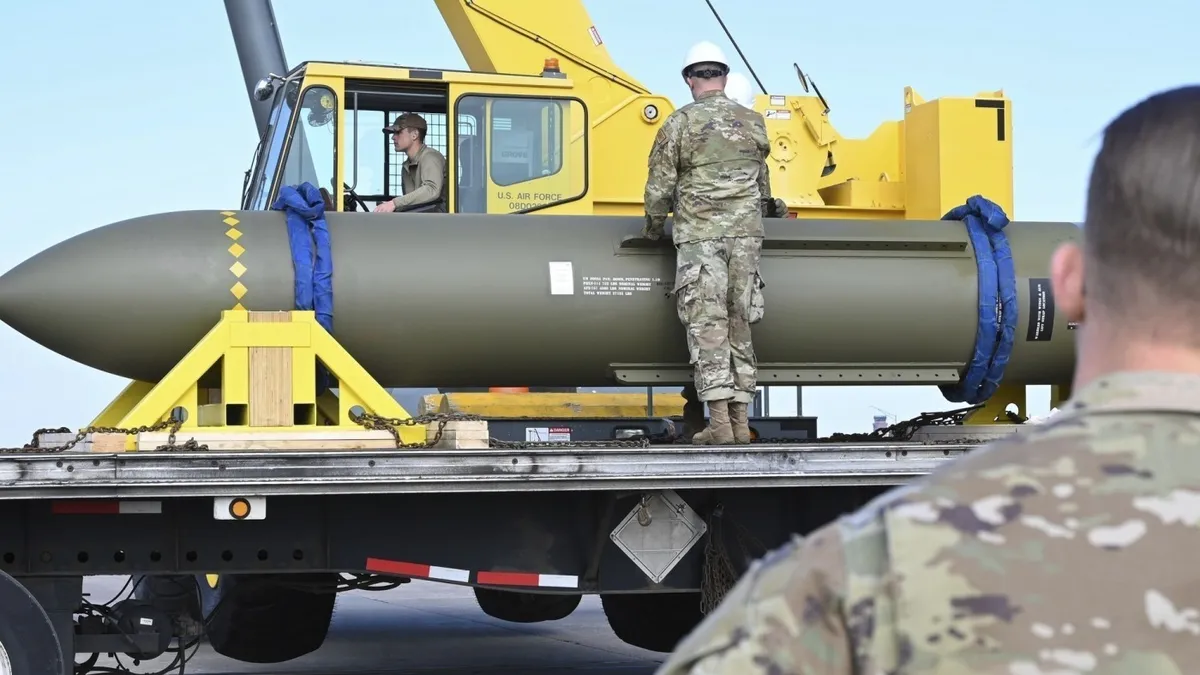
As the conflict between Israel and Iran intensifies, entering its sixth day, the United States appears to be considering direct military involvement. President Trump expressed uncertainty about the U.S.'s next steps when he told reporters, "I may do it. I may not do it. Nobody knows what I'm going to do." This ambiguity raises questions about the U.S.'s strategy in the region and its implications for international relations.
Israel has articulated its military actions as necessary to prevent Iran from developing a nuclear weapon, which Israel views as an existential threat. This concern aligns with the U.S. objective of limiting Iran's nuclear capabilities, especially following the recent negotiations that aimed to contain Tehran's ambitions. As tensions rise, the focus shifts to Iran's fortified nuclear facility at Fordo, which is deeply embedded within a mountain, making it particularly challenging to target.
Only the U.S. possesses the advanced 30,000-pound bunker buster bombs, known as GBU-57 MOP (Massive Ordnance Penetrator), that are capable of penetrating such fortified structures. These bombs require B-2 stealth bombers for deployment, creating a complex scenario for Israel, which lacks heavy bombers capable of delivering such munitions. As noted by Aaron David Miller, a senior fellow at the Carnegie Endowment for International Peace, Israel cannot independently destroy Iran's nuclear program, and any failure to act could be perceived as a defeat.
The term bunker buster refers to a category of bombs designed to penetrate deep underground before detonating. While these munitions date back to World War II, they were significantly refined during the Gulf War. Ryan Brobst, a munitions expert, clarifies a common misconception: bunker busters do not rely solely on explosive power. Instead, their hardened steel casings enable them to penetrate deep into the ground, similar to a drill, thus allowing them to destroy fortified targets efficiently.
The GBU-57 MOP is among the most powerful non-nuclear bombs in the U.S. arsenal, measuring 20 feet in length and weighing 30,000 pounds. Although it has never been used in combat, it was specifically designed with Iran's nuclear facilities in mind. Experts suggest that if the GBU-57 fails to penetrate its target, subsequent bombs must be dropped precisely in the same location to achieve the desired effect, increasing the risk of failure with each attempt.
Due to the GBU-57’s size and the requirement of a B-2 stealth bomber for delivery, only the U.S. military can deploy this specific bomb. As Trevor Ball, a munitions analyst, points out, transferring such a weapon to the Israeli Air Force is not a feasible option. "There's no way for Israel to do this strike without the U.S.," he states, underscoring the complex military logistics at play.
Experts generally agree that a strike utilizing the GBU-57 could inflict significant damage on a facility like Fordo, potentially delaying Iran's nuclear ambitions. However, the overarching question remains: would such an attack be sufficient to halt Iran's nuclear program permanently? Ali Vaez, director of the International Crisis Group's Iran Project, notes that intelligence assessments suggest a successful U.S. strike could only push back Iran's nuclear capabilities by a year or two, rather than eliminate them entirely.
The International Atomic Energy Agency (IAEA) has confirmed that Iran is producing highly enriched uranium at Fordo, indicating that a military strike could release radioactive materials into the surrounding area. While the immediate risk to civilians may be contained, the IAEA warns that even a targeted attack could have far-reaching consequences, potentially affecting the health and safety of nearby populations.
Rafael Grossi, IAEA Director General, has expressed deep concern over the attacks on Iran's nuclear facilities. He emphasizes that nuclear sites should never be targeted, regardless of the circumstances, as doing so could have dire implications for both human safety and the environment. Grossi urges all parties involved to exercise maximum restraint in this volatile situation.